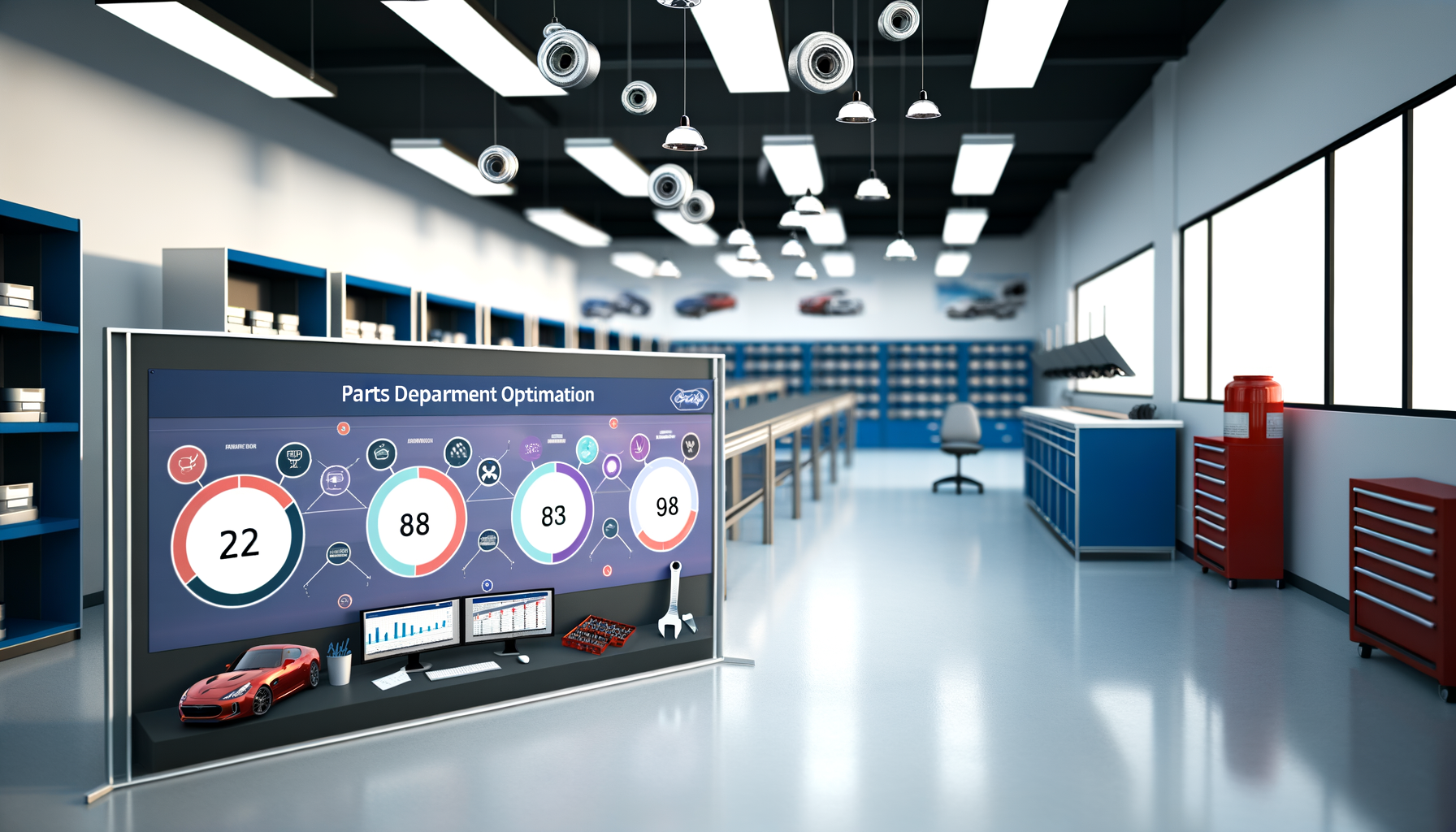Unleashing Profit Potential: Mastering Parts Department Optimization in Dealerships for 2025

Understanding the Current State of Parts Department Optimization

As of 2025, automotive dealerships face unique pressures in their parts departments, with profitability and efficiency at the forefront of operational priorities. Current trends indicate a 15% rise in EV-related parts demands, necessitating a reevaluation of traditional inventory strategies.
The shortage of critical parts continues to plague service departments, impacting customer satisfaction and operational flow. Addressing these challenges requires a strategic approach that combines technology, process innovation, and staff training.
Implementing a robust parts department strategy begins with understanding the existing landscape, identifying bottlenecks, and leveraging data insights to inform decision-making.
Leveraging Data Analytics for Inventory Management

Data analytics plays a pivotal role in optimizing parts inventory management. By utilizing advanced analytics tools, dealerships can predict demand trends, manage stock levels more effectively, and reduce carrying costs.
One case study demonstrated a 20% reduction in excess inventory by integrating predictive analytics, which forecasted part requirements based on historical sales and upcoming service appointments.
To implement this, consider investing in a robust DMS that integrates seamlessly with your parts department operations, enabling real-time data insights and inventory adjustments.
Streamlining Operations with Automation

Automation is revolutionizing dealership operations, particularly in parts departments. By automating routine tasks like reordering and inventory audits, dealerships can significantly reduce manual errors and free up staff for more strategic roles.
An example from a leading dealership showed a 30% time saving in inventory management after deploying automated systems for stock reordering.
To adopt automation, evaluate vendors offering solutions tailored to automotive parts operations, ensuring integration capabilities with existing systems like Auto Pro Solutions.
Effective Upselling Strategies to Boost Sales

Upselling in the parts department requires a nuanced approach that considers customer needs and historical purchasing behavior. Techniques such as bundling products or offering service packages can significantly enhance revenue.
In practice, a dealership increased parts sales by 25% by training staff to suggest complementary products during service interactions.
Implement this by training staff on cross-selling techniques and utilizing CRM systems to identify customer preferences and past purchases.
Reducing Obsolescence and Enhancing Inventory Turnover

Obsolescence is a significant issue that directly impacts profitability. By implementing proactive strategies like regular inventory audits and dynamic pricing, dealerships can minimize obsolescence.
A dealership case study revealed a 40% reduction in obsolete parts by adopting a dynamic pricing strategy that adjusted prices based on demand and inventory levels.
To achieve this, regular data analysis and a flexible pricing model should be incorporated into inventory management practices.
Implementing Technology for Improved Customer Experience

With 68% of customers preferring digital service scheduling, integrating technology that enhances the customer experience is crucial. This includes offering online parts ordering and appointment scheduling.
A dealership that implemented an online parts portal saw a 50% increase in customer engagement within the first six months.
For implementation, choose platforms that offer seamless user experiences and integrate with existing dealership management systems.
Measuring Success: KPIs and Benchmarking

The success of parts department optimization must be measured against specific Key Performance Indicators (KPIs) to ensure strategic goals are met. Common KPIs include inventory turnover rate, gross profit percentage, and customer satisfaction scores.
Incorporating a benchmark analysis can help dealerships understand their standing in comparison to industry standards, driving continuous improvement.
To effectively measure success, establish a consistent KPI tracking system that provides actionable insights and enables timely adjustments.
Related Topics
Ready to take your service department to the next level?
Schedule your demo today and experience the power of Auto Pro Solutions.
Schedule Demo